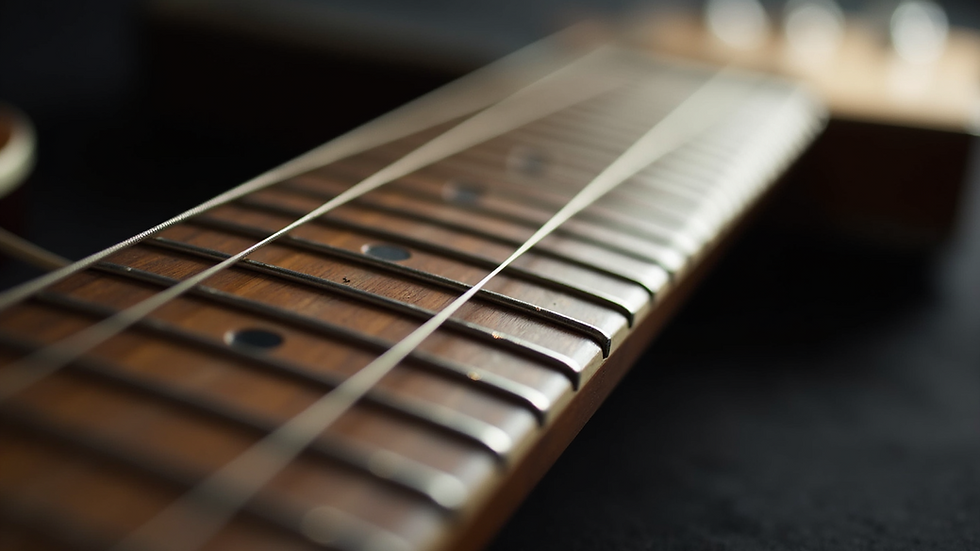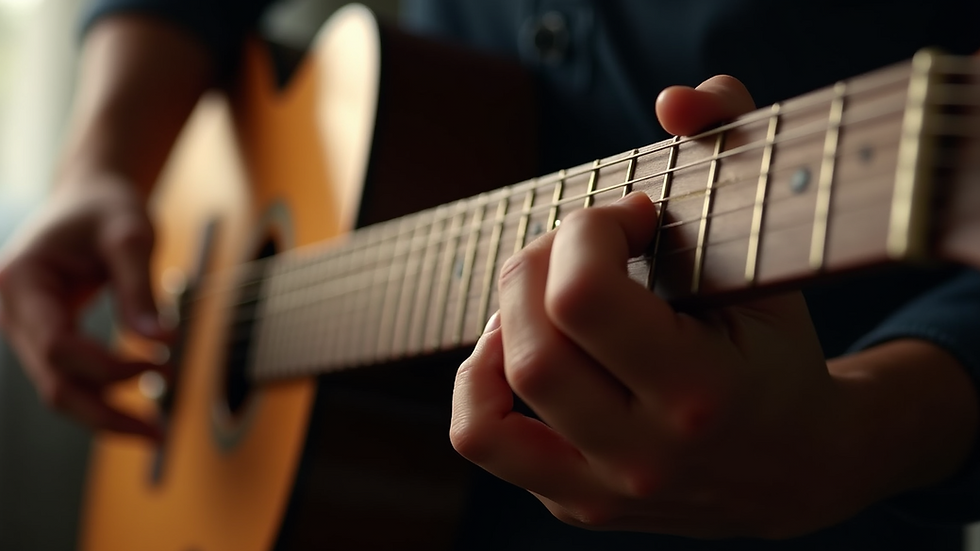How to Get the Best Sound Out of Your Guitar
- Amanda Browder
- Aug 7
- 5 min read
Updated: Aug 8
Getting the best sound out of your guitar is a goal for every player, whether you're a beginner or a seasoned musician. The tone you produce depends on many factors, including your guitar's condition, the strings you use, and how well your instrument is set up. A proper guitar setup can transform your playing experience, making your guitar easier to play and sound its absolute best. In this guide, we will explore practical steps and expert advice to help you achieve the perfect sound from your guitar.
Understanding the Importance of a Guitar Setup
A guitar setup is essential for optimizing your instrument's playability and tone. When your guitar is properly set up, the strings are at the right height, the neck is adjusted correctly, and the intonation is spot on. This means your guitar will be easier to play, stay in tune longer, and produce a clear, balanced sound.
Many players overlook the importance of a setup, but it can make a huge difference. For example, if your strings are too high, it will be difficult to press them down, causing fatigue and affecting your playing style. If the intonation is off, your chords and notes will sound out of tune even when the open strings are tuned correctly.
Regular maintenance and setup adjustments can prevent these issues and keep your guitar sounding fresh. Whether you play electric, acoustic, or classical guitar, a good setup is the foundation for great tone.

How to Perform a Basic Guitar Setup
Performing a basic guitar setup involves several key steps. You don't need to be a professional to do some of these adjustments yourself, but if you feel unsure, consulting a professional is always a good idea.
1. Check the Electronics (For Electric Guitars)
Ensure pickups, pots, and switches are clean and functioning well. Dirty contacts can cause crackling or loss of signal.
2. Clean Instrument and Replace Strings
After a basic cleaning, proceed to polishing the frets and oiling the board (using the proper products, tools, techniques, etc). Then change the strings. Old strings lose their brightness and can affect tone. Regularly clean your strings with a cloth and replace them when they sound dull or feel rough.
3. Check and Adjust the Truss Rod
The truss rod controls the curvature of the guitar neck. A neck that is too bowed or too flat can cause buzzing or high action. To check the neck relief:
Press the first fret and the fret over the neck joint on the low E string simultaneously.
Look at the gap between the string and the frets around the 7th fret.
A small gap (about the thickness of a business card) is ideal.
If the gap is too large or nonexistent, adjust the truss rod by turning it clockwise to reduce relief or counterclockwise to increase it. Make small adjustments and check frequently.
4. Set the String Action
String action refers to the height of the strings above the fretboard. High action makes playing harder, while low action can cause fret buzz. Adjust the action by:
Raising or lowering the bridge saddles on electric guitars.
Adjusting the saddle height on acoustic guitars.
Ensuring the nut slots are properly cut for the strings.
5. Intonation Adjustment
Intonation ensures that your guitar plays in tune across the entire fretboard. To check intonation:
Tune the open string.
Play the open string and compare it to the fretted 12th fret note.
If the fretted note is sharp, move the saddle back; if flat, move it forward.
Repeat for all strings.
By following these steps, you can significantly improve your guitar's sound and playability.

What is a Full Setup on a Guitar?
A full setup is a comprehensive adjustment and maintenance process that covers every aspect of your guitar's playability and sound. It typically includes at least:
Neck relief adjustment via the truss rod.
String action setting at the bridge and nut.
Intonation correction for accurate tuning across the fretboard.
Fret inspection, leveling, and/or polishing to eliminate buzzing and dead spots.
Nut slot filing to ensure proper string height and tuning stability.
Cleaning and lubricating moving parts like tuning machines.
String replacement with fresh, quality strings.
Electronics check for electric guitars, including pickups and wiring.
A full setup is usually done by a professional guitar technician but can be learned by dedicated players. It ensures your guitar performs at its best and can extend the life of your instrument.
Regular full setups are recommended, especially if you change string gauges or notice playability issues. Many guitar shops offer this service, and it is worth investing in for the best sound.

Choosing the Right Strings and Accessories for Better Tone
Your choice of strings and accessories plays a crucial role in your guitar's sound. Different string materials, gauges, and brands can drastically change your tone and feel. Strings should be changed at least yearly, and quarterly or better depending on player use.
String Types
Nickel-plated steel strings are popular for electric guitars, offering a balanced tone with brightness and warmth.
Pure nickel strings provide a warmer, vintage sound.
Phosphor bronze strings are common for acoustic guitars, known for their balanced and clear tone.
Coated strings last longer and resist corrosion but may feel different.
String Gauge
Lighter gauges are easier to play and bend but may produce less volume and sustain. Heavier gauges offer fuller tone and better tuning stability but require more finger strength.
Accessories
Picks: Thickness and material affect attack and tone.
Capos: Can change your guitar's key and tone.
Amplifiers and pedals: For electric guitars, these shape your sound significantly.
Experimenting with different strings and accessories can help you find the tone that suits your style best.
Tips for Maintaining Your Guitar’s Sound Quality
Maintaining your guitar is key to preserving its sound quality over time. Here are some practical tips:
Keep your guitar clean: Wipe down strings, fretboard, and body after playing.
Store properly: Use a case or stand in a stable environment to avoid humidity and temperature damage.
Change strings regularly: Old strings lose tone and can damage frets. Strings should be changed at least yearly, and even more often with frequent use.
Check hardware: Tighten loose screws and lubricate tuning machines.
Use quality cables and amps: For electric guitars, good equipment ensures clear sound.
If you want to learn more about professional guitar maintenance, consider exploring guitar setup tips from trusted sources.
Enhancing Your Guitar Sound with Playing Techniques
Your playing technique also influences your guitar’s sound. Here are some ways to improve tone through technique:
Use dynamics: Vary your picking strength to add expression.
Experiment with fingerpicking: Different fingers produce different tones.
Control your attack: Use the pick closer or farther from the bridge for brighter or warmer sounds.
Practice muting: Palm muting can add percussive effects.
Explore vibrato and bending: Adds emotion and character to notes.
Combining good technique with a well-set-up guitar will maximize your sound quality.
By following these guidelines and regularly caring for your instrument, you can unlock the full potential of your guitar’s sound. Whether you do a simple setup yourself or seek professional help, the effort will pay off in better tone, easier playability, and more enjoyment every time you play.



Comments